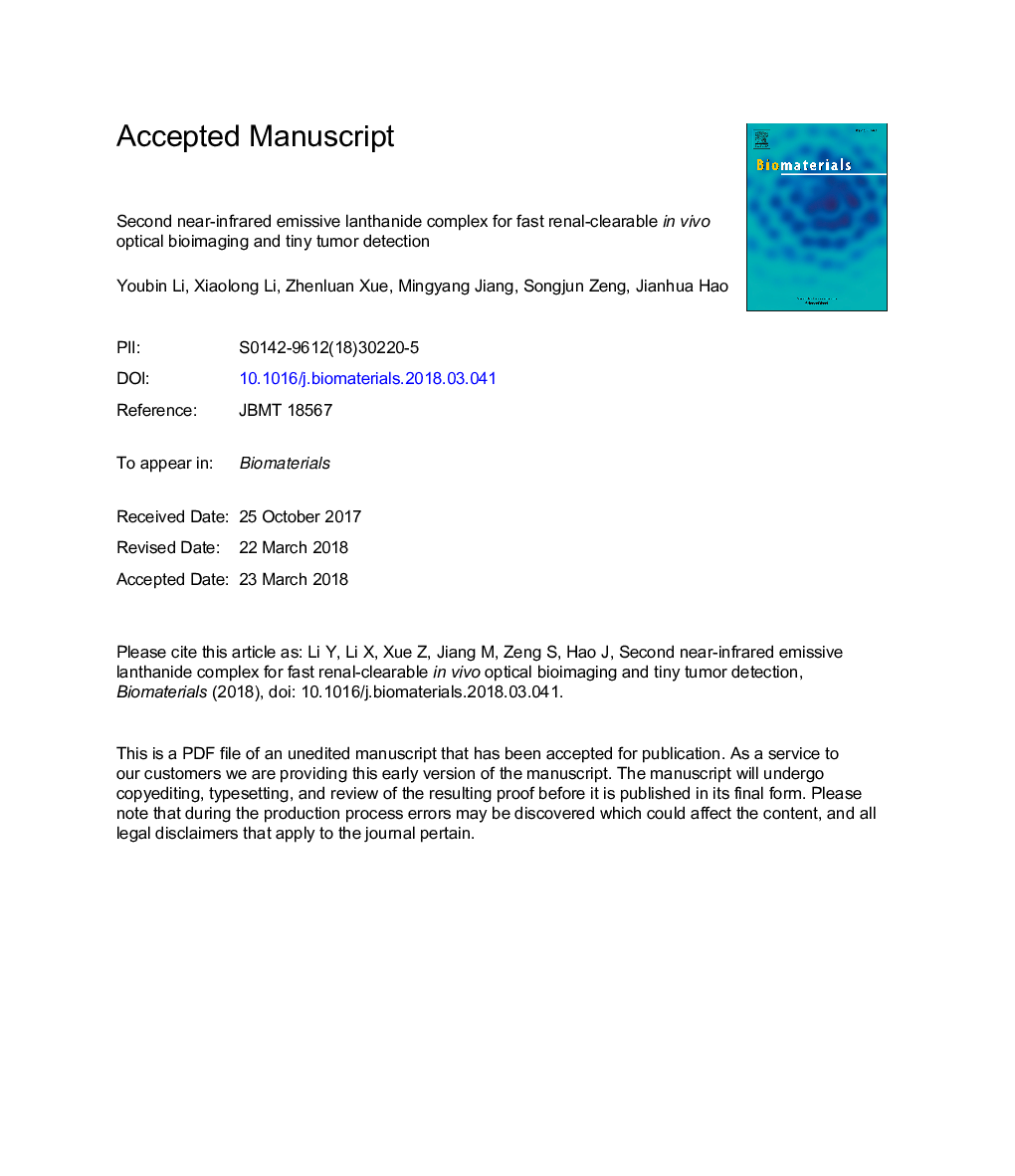| Article ID | Journal | Published Year | Pages | File Type |
|---|---|---|---|---|
| 6484528 | Biomaterials | 2018 | 33 Pages |
Abstract
In vivo optical imaging by using a new imaging window located at short-wavelength infrared region (1000-1700â¯nm, named as NIR II) presents an unprecedented improvement in imaging sensitivity and spatial resolution over the traditional visible and near-infrared light. However, the most developed NIR II-emitters are hardly excreted from live animals, leading to unknown long-term toxicity concerns, which hinder the widespread applications of this advanced imaging technology. Here, we developed a new generation molecular NIR II-emitting probe based on Nd-diethylene triamine pentacetate acid (DTPA) complex. The designed molecular Nd-DTPA probe with bright narrow band emission at 1330â¯nm is successfully used for highly sensitive in vivo NIR II bioimaging with rapid renal excretion, high biocompatibility and optical-guided tiny tumor (down to â¼3â¯mm) detection for the first time. Moreover, the Nd-DPTA complex also holds great promise as an X-ray contrast agent. These findings open up the possibility for designing a new generation of multi-modal small molecular probe for early tumor diagnosis and favor the clinic translation of the advanced NIR II imaging method.
Keywords
Related Topics
Physical Sciences and Engineering
Chemical Engineering
Bioengineering
Authors
Youbin Li, Xiaolong Li, Zhenluan Xue, Mingyang Jiang, Songjun Zeng, Jianhua Hao,
